Cheer up! When walking through the streets of Avignon, you should take your eyes off the cobblestones or the tempting displays of the stores and also pay attention to the house facades of the old town. What can be discovered here could be casually summarized under the motto Street Art through the ages. And yet each of these three types of facade decoration has its own history.
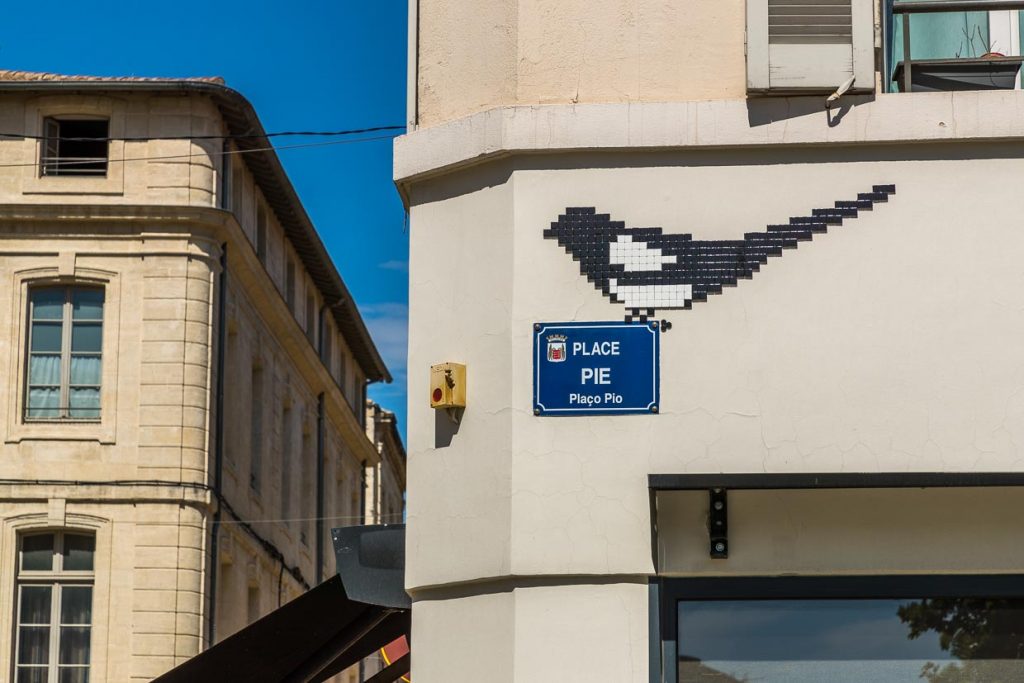
MifaMosa -Streetart on a street sign
Street artist MifaMosa has been playing with the street names of French cities since 2017. He also calls himself a street illustrator, because he always places his mosaics right next to a street sign and refers to its meaning. This mix of humorous and colorful interpretations are beautiful to look at and spice up the formal signs. What we know about the artist? He lives in Orleans and has created more than 300 mosaics to date. Most notably in Orleans, Lyon, Montpellier, Lille and Avignon. His pseudonym MifaMosa is composed of Mifa for my family and Mosa for mosaic. If you look closely, you will find three mosaic dots as a signature on each street illustration. They stand for his mother, his sister and himself – family.
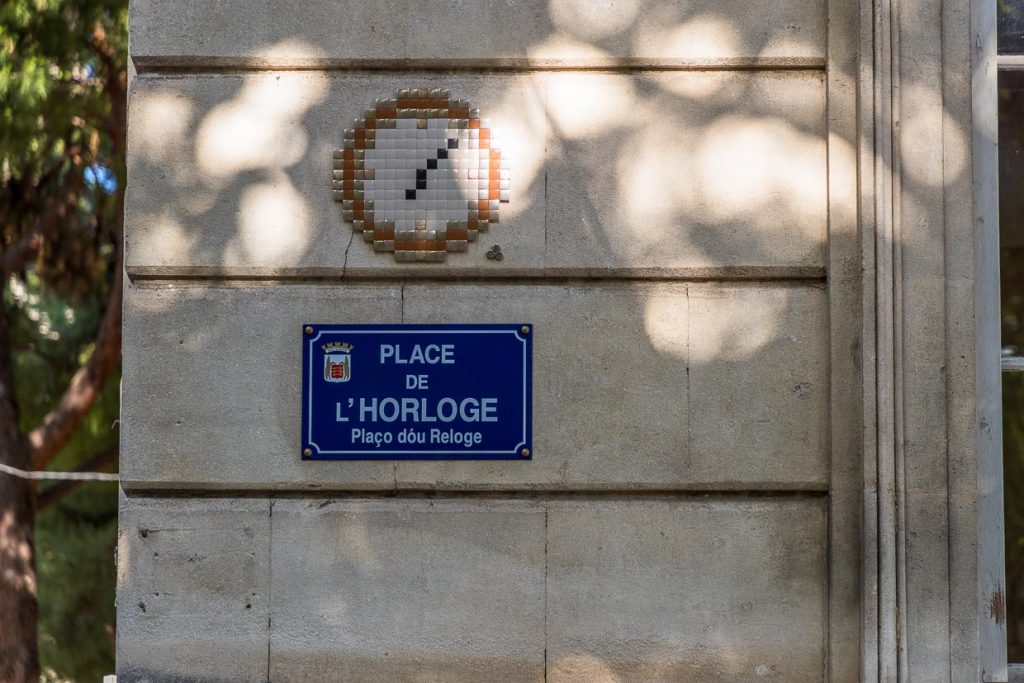
The theater windows of Avignon
Every year during the last three weeks of July, Avignon is transformed into a grand theater stage. The festival of dance, theater and song was founded in 1947 by Jean Vilar, a French actor and theater director. Performances are held on the city’s large stages, but also in private backyards, cafés or small squares. In 1986, artist Marion Pochy and artist Dominique Durand began creating bricked-up windows that can be found on many buildings in the old city. Today, there are 70 windows that are large murals referencing famous productions in the festival’s history. Almost more exciting than this thematic reference to Avignon’s internationally renowned theater festival, however, is the explanation for the many blind spots in the facades of the old town. They date from the time when a strange tax was levied in France, the loophole of which the artist collective Pochy and Durand used as a canvas.
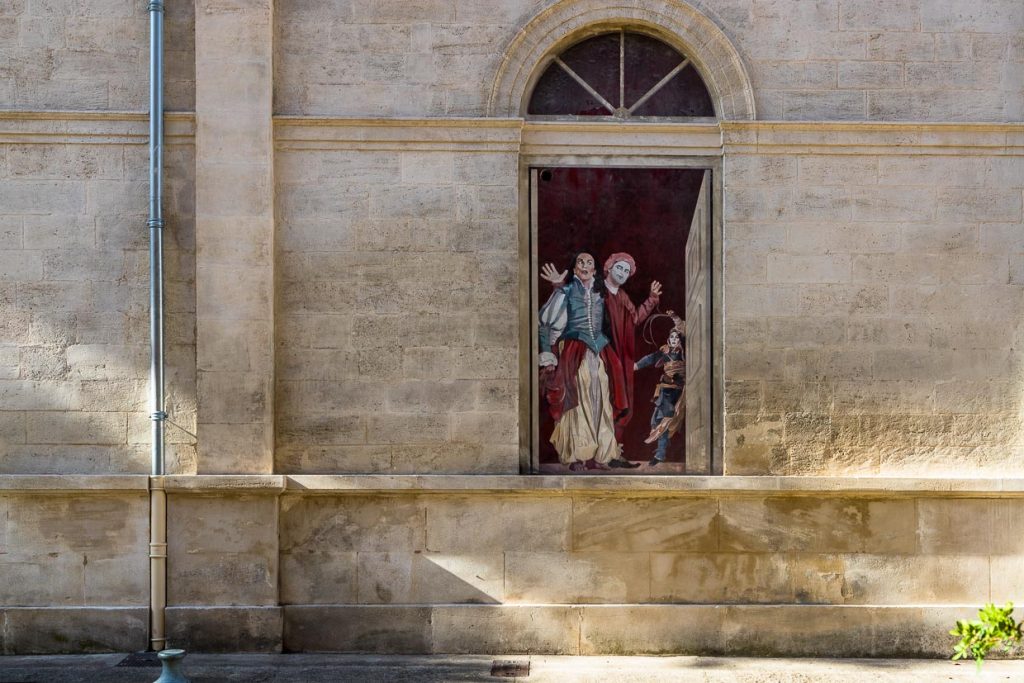
The window tax
Administrations around the world come up with the strangest ideas to tax their citizens. And citizens have always tried to avoid taxes. In France, there was the so-called window tax for about 100 years starting in 1798. It was levied on the number of windows in a house. The window tax was easier for the treasury to collect than the hearth tax, which required the inspector to enter the house. Thus, henceforth, windows facing the street were counted. Ironically, the loophole to avoid the tax was to plug the windows. Blind windows were exempt from the tax as long as the filler material harmonized with the adjacent walls. In this way, homeowners deprived their tenants of daylight but saved taxes. It was on these solidly walled areas, which were not reopened even after the tax was abolished, that the artists’ collective Pochy and Durand created the theater festival in Avignon many years later. Since then, dramatic scenes play out in the windows of Avignon and Pablo Picasso gazes thoughtfully at the Rue Corneille, which MifaMosa has embellished with a mosaic.
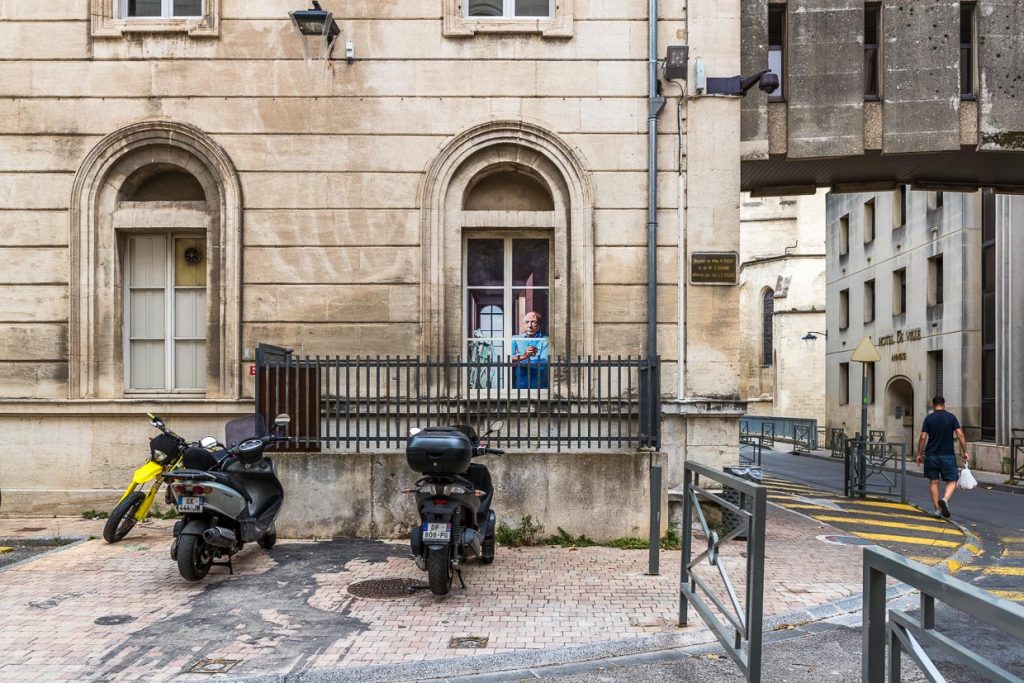
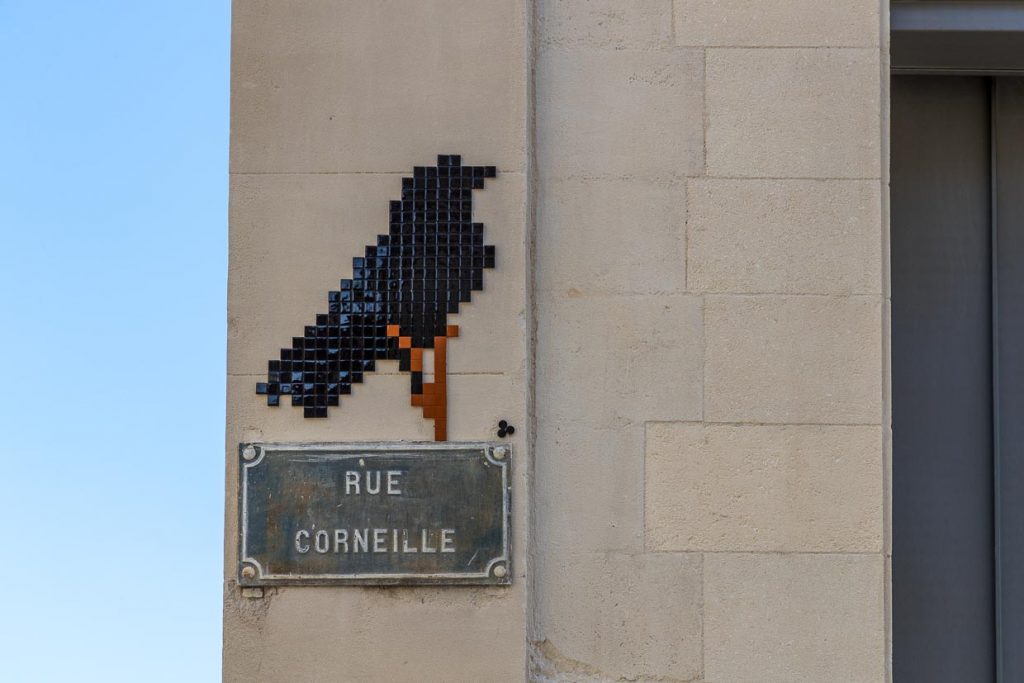
The Lord God and the house Madonna
Avignon is also known to be the city of popes. Seven popes resided here in the 14th century and, during the period of the Western Schism from 1378 to 1417, two more counter-popes. Botticelli’s famous Madonna and Child from 1467 still hangs in the Petit Palais Museum in Avignon, and the city, it is said, is under the protection of the Madonna. Even in later centuries, when the Curia had long since returned to Rome, this was expressed on the facades of the houses. On very many house corners and in richly decorated niches of the old town hang Madonna figures. This so-called house Madonna is supposed to protect the house and its inhabitants.
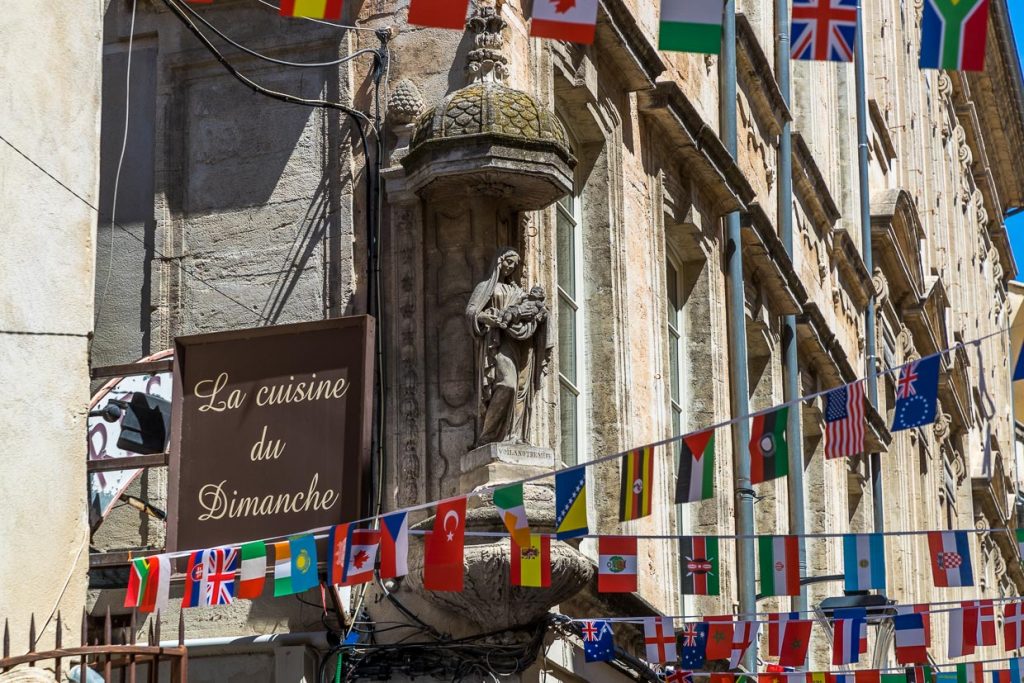
Of course, Avignon has more significant sights to offer with the imposing Papal Palace and the famous Pont Saint-Bénézet, but with knowledge of the diverse facade decorations, you can play a scavenger hunt with yourself or keep the kids entertained while walking through the city. A visit to Avignon’s indoor market is also a must. Approached from the wrong side, Les Halles is just an ugly, aging functional building. From the main portal, however, it surprises with a green wall of plants. Inside the hall, some forty merchants and restaurateurs offer the entire culinary spectrum of Provence.
The on-site research was supported by Avignon Tourism.

